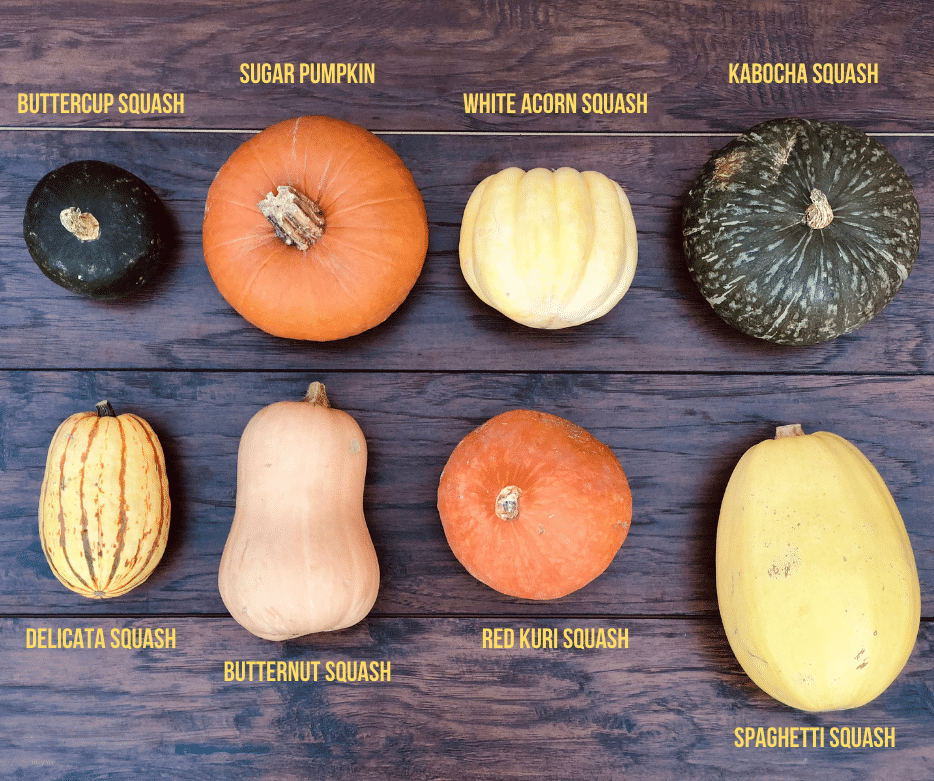Fall and winter are famous for pumpkin season, but there are many other types of winter squashes that pop up in the produce section that your participants may be curious about. They may seem intimidating to some, so these tips may be helpful to share about the various types of squash and how to prepare them. Read on for more information or jump right to the recipes.
Winter squash are varieties of squash usually harvested in the fall. They differ from summer squash (like zucchini and yellow squash) because their rind has hardened, which makes them perfect as long-lasting produce. Even though they are categorized as winter squash, some varieties are available year-round at the supermarket. These vegetables contain a number of nutrients such as vitamin C, potassium, magnesium, and fiber. They also contain carotenoids, such as beta-carotene, that give squash its bright colors. These pigments are precursors to vitamin A, meaning the body converts them to active forms of vitamin A.
Winter squash: These tend to have a thicker skin and can be stored for quite a while (all through the winter). They include: butternut, pumpkin, acorn, delicata, hubbard, and spaghetti squash (to name a few). Summer squash: These, on the other hand, have more tender skins and do not store for as long.

Tips & Ideas to Share
There are many types of winter squash that vary in size, color, shape, and flavor. Here are some of the most common squashes that may be found in grocery stores.
Types of Winter Squash
- Acorn Squash: As you might expect from its name, this squash resembles a large acorn. It has dark green skin with yellow flesh and when cooked, has a nutty, mildly buttery flavor. When cut and baked in halves, it is great for stuffing with its bowl-like shell.
- Butternut Squash: This squash has a slim neck and bulb-shaped bottom along with thin pale tan skin and bright orange flesh. Butternut squash is one of the most popular types of winter squash with its sweet, slightly nutty flavor and is usually available year-round.
- Delicata Squash: Small and oblong with thin yellow, dark green, and orange striped skin, this squash has a yellow flesh that is sweet, nutty, and corn-like. It is said its texture is similar to that of sweet potato.
- Kabocha Squash (or Japanese Pumpkin): This squash is round and squat with a dark green, often bumpy/ridged skin. Its dark orange flesh tends to be denser than other types with a nutty, earthy, and sweet taste.
- Pumpkin: Likely to be the most familiar squash in this list, pumpkins are known for their round shape and ribbed orange skin and orange flesh. The flavor is sweet and buttery and its commonly used in soups and desserts.
- Spaghetti Squash: This variety is cylindrical in shape with pale to bright yellow skin and yellow flesh. Once cooked, the flesh is stringy like noodles and the flavor is quite mild and not as sweet. Its often used as a pasta or noodle alternative.
- Other Types: Some other, less common, varieties of winter squash that participants may come across include honeynut, carnival, buttercup, hubbard, sweet dumpling, and turban squash. All of these can be prepared similarly to the types listed above.
Differences between Pumpkins and Squash & Favorites | Prairie Yard & Garden
FAQ
Can you substitute butternut squash for winter squash?
Is winter and butternut squash the same?
What is another name for a butternut squash?
Why is acorn squash called winter squash?
